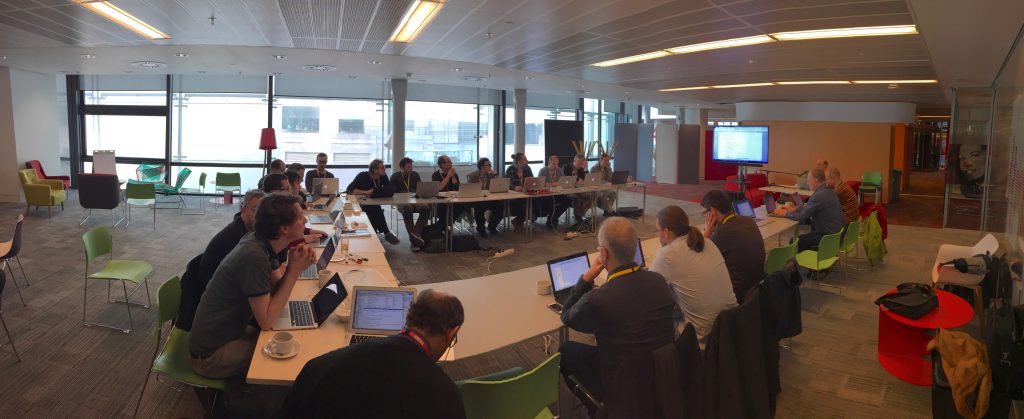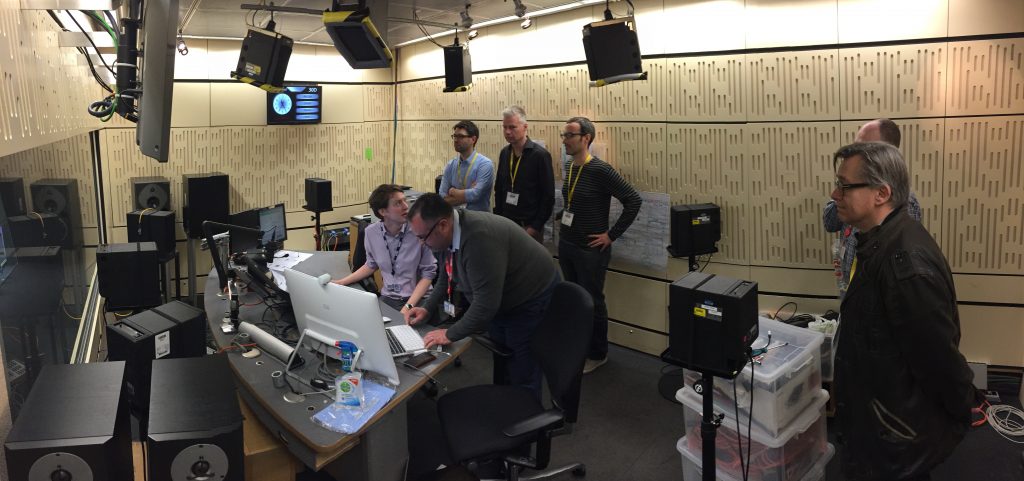
Our partner BBC R&D hosted the meeting that kicked-off the hot phase of our pilot phase 1 in London’s prestigious Broadcasting House. Exactly 10 weeks to go until day X, we had to make final plans and decisions for our “live multiplatform” demonstration of the object-based developments we have achieved during the first 18 months of our project. So for this meeting, we had decided to take a solution based approach, focusing rather on open questions and issues than the setting the agenda along to the project’s work-package structure.
The main interest of the ORPHEUS collaborators was, of course, to see the achievements BBC made in setting up the ORPHEUS radio studio. As shown in this video the studio right in the heart of the old Broadcasting House is integral part of BBC’s over-all strategy for the next generation media production and delievery, the IP Studio. So in order to understand the established workflows and infrastructure at the BBC, the colleagues had organized some tours through the house, showing the ‘Now – Next – Later’ approach they’re using to explore and shape the future of broadcast media production.

In the ORPHEUS radio studio, the object-based audio production “The Turning Forest” was played: 60 sound objects immersed the listeners in the installed 4.7.1 channels, totally IP connected sound equipment, demonstrating the capability and quality of BBC R&D’s own developed audio renderer for the IP-studio.
The award-winning “The Turning Forest” was last year co-produced with the UK based S3A Future Spatial Audio research project, that BBC R&D is participating within its Audio Research Partnership program with British Universities. As outgoing BBC R&D Audio Research Leader Frank Melchior was responsible for both projects dealing with immersive and object-based audio, he decided to take this chance and introduce both teams on a specially organized joint meeting day in BBC’s beautiful historic council meeting room.

After short introductory presentations about the goals and structures of both projects, along with some interactive ‘speed dating’ activities to get to know each other in person, seven teams exchanged in details on their specific interests and explored potential fields of future collaboration.




















